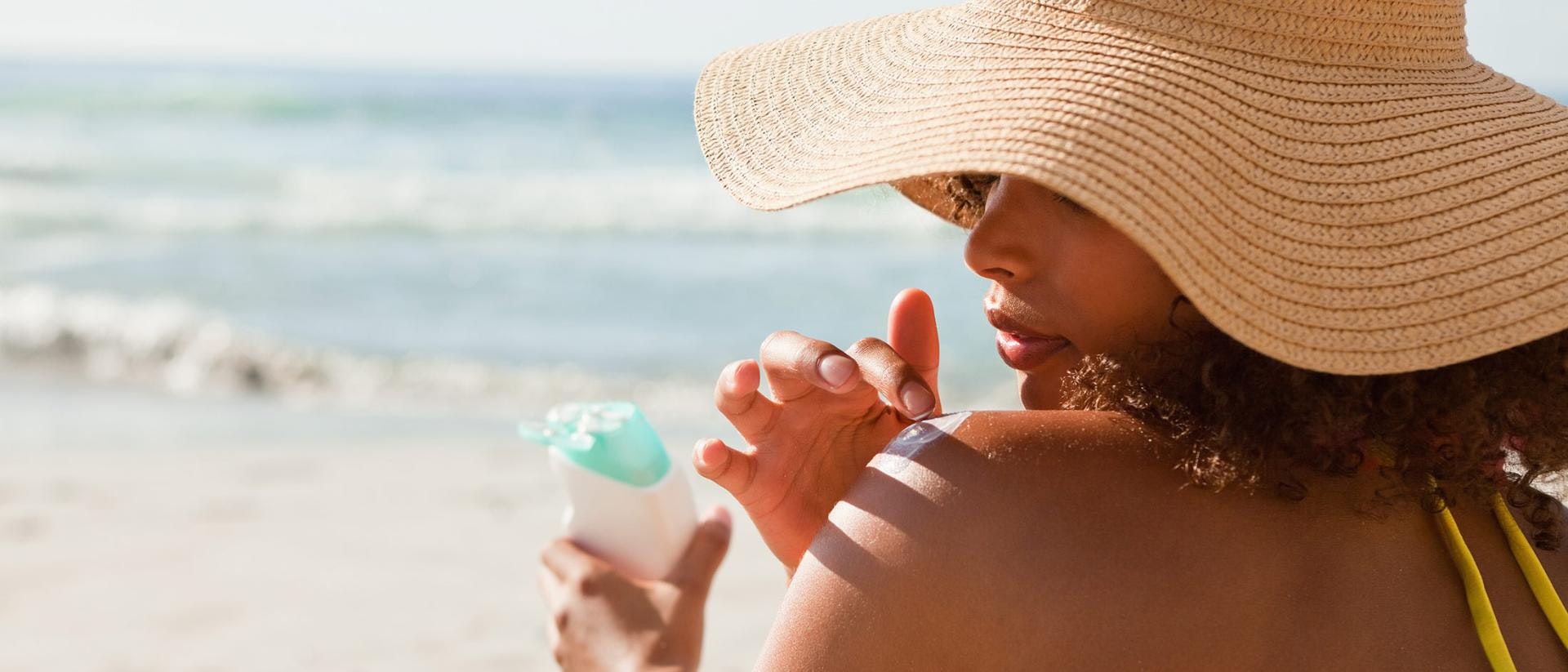Expert tips for summer skin care


Bask in the sun, take a dip in the pool, feel the blades of grass between your toes. Summer’s long days are here to enjoy, but some of the season’s best outdoor pastimes can also wreak havoc on our skin.
Combat summer’s most pesky skin concerns with these expert tips from Dr. Jeffrey Zwerner, Senior Medical Advisor for Dermatology at HealthiestYou
Sunburns
More than one-third of adults in the U.S. reported a sunburn in the previous year.1 Teens are even worse offenders: 57% of adolescents admit to recent sunburns.2
The best way to protect yourself from the sun, Dr. Zwerner says, is prevention.
When shopping for sunscreen, look for those that protect against both UVA and UVB rays, and have a sun protection factor (SPF) of 30 or higher.3
Reapply every two hours and more frequently if you’re in or near water.
Look for shade, especially between the hours of 10 a.m. and 2 p.m.
Wear long-sleeved, protective clothing, including a wide-brimmed hat and large sunglasses.
These protective strategies can help prevent skin cancer from developing too.
If you’re feeling the burn, take a cool bath, moisturize the skin with cream, and take aspirin, acetaminophen or ibuprofen. Drink plenty of water and stay out of the sun! If your sunburn is bad enough, skin blistering or peeling over a large area may develop with fevers or chills. Talk to a Teladoc doctor if you have these symptoms of a second- or third-degree sunburn.
Hives and rashes
While exploring, you may come across poisonous plants either off the beaten path or right in your own backyard. Poison ivy, oak and sumac aren’t actually poisonous, but they give off an oil that causes skin to itch badly and blister.
If you know you’ve been in contact with these plants in wooded or marshy areas, wash your clothes and skin thoroughly. A reaction of red, itchy and swollen skin will appear within one to three days if you’ve been affected.
Rashes can also occur from chlorine in the pool or even a new detergent or soap you’re using while on vacation. It may take some detective work to determine and remove the irritating cause.
You can treat rashes with calamine lotion, oatmeal baths and an over-the-counter nonsedating antihistamine like fexofenadine, loratadine or cetirizine. Sedating antihistamines like diphenhydramine (Benadryl) can also be helpful but may make you drowsy. If your rash covers the eyes, face, genitals or is severe, talk to a doctor.
Stings
Bee and wasp stings are a threat during summer months and can cause local swelling, itching, a rash or even a more serious reaction.
If stung, apply a cold compress or ice for soothing, but if you have trouble breathing, swelling in your lips or arms, or hives, call 911 immediately. These symptoms signal a severe allergic reaction.
Bites
Mosquito bites are a common, yet bothersome, side effect of outdoor fun. Mostly people just get a small bump with some redness or swelling within a day of the bite. Treat the itching with an over-the-counter hydrocortisone cream, or a doctor can prescribe a more powerful one. Non-sedating and sedating antihistamines as described above can also be helpful. Prevention is effective: Cover up skin and use a bug repellent with DEET.
Ticks, which can carry Lyme disease and other tick-born illnesses, can also be avoided by covering up skin, wearing a hat and using insect repellent. Check your head and body for ticks after coming inside too. Lyme disease is typically characterized by a bull’s-eye rash around the bite. If you are concerned that you’ve contracted Lyme disease, please consult a doctor.
Aquatic stings and scrapes
If you’re an ocean explorer, jellyfish are a concern. This burning, prickling sting can leave irritated marks or “tracks” on the skin. If stung, rinse the area with vinegar, remove the tentacle parts with tweezers and soak the skin in hot water.
If you frequently swim or surf in seawater, consider wearing a wetsuit to protect your skin from scrapes and irritants. For any water activity, water shoes can protect your feet from rocks and other sharp objects.
Other causes and solutions
If your skin is suffering, don’t be too quick to blame summer itself. If a rash has developed, think about whether you’ve tried a new food, started wearing different perfume or started a medication. Take our rash quiz or talk to a doctor who can help you work through some of these other causes.
Viral rashes are also very common in both kids and adults this time of year. If you’re having other symptoms, such as runny nose, sore throat and congestion, a virus could be causing the rash. In children, hand, foot and mouth disease is a minor, common virus that can cause blisters in the mouth or red dots on the feet and hands or stomach. It most commonly spreads in the summertime. Keep up with good hand hygiene practices at home and while traveling.
For all your summer skin care needs
Don’t let simple skin issues keep you from a memorable summer. If you have concerns about anything related to your skin—from acne to a rash—it’s time to get professional help. Reach out to WellnessWay HY online or by app 24/7 to upload images of your skin condition.
Our U.S. board-certified dermatologists will give you a diagnosis and treatment plan customized to fit your specific needs within two days or less. They can also prescribe medications if medically necessary.